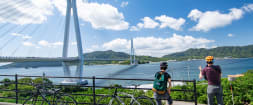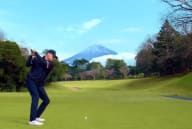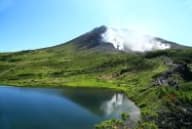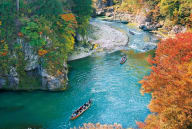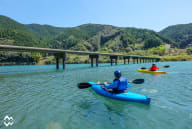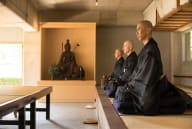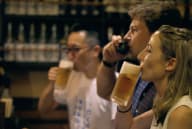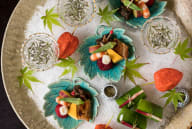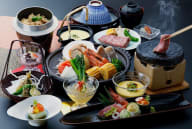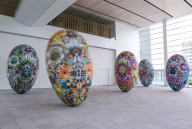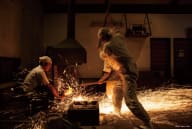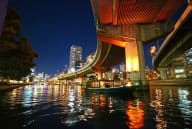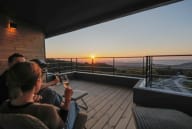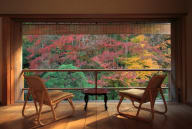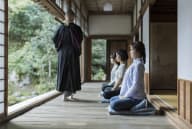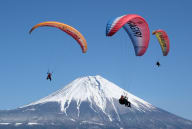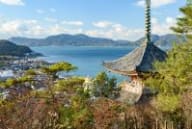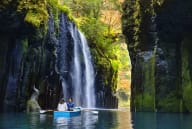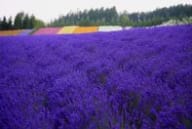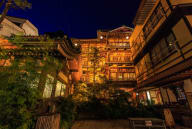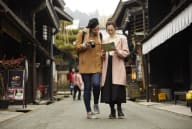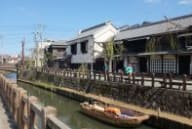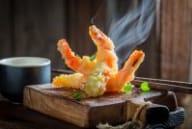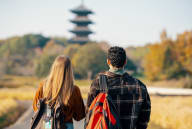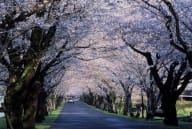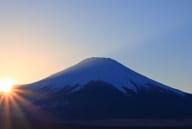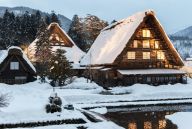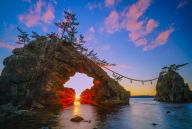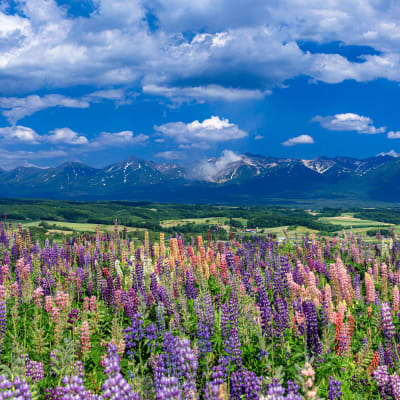Use the
Planning a Trip to Japan?
Share your travel photos with us by hashtagging your images with #visitjapanjp

Located in the northernmost part of Japan, Hokkaido’s vast landscapes, ranging from mountains and marshes to plains and alpine meadows, support a unique variety of floral life adapted to the region’s long winters and short, vibrant summers. But beyond their beauty, these flowers have become a driver of new industry. In areas such as Furano, Higashimokoto, and Rebun, flowers are more than seasonal spectacles—They have spurred the development of high-value sectors aligned with the GREEN×EXPO 2027 subtheme of Co-creation. From floral tourism and lavender-based products to wellness, conservation, and education, Hokkaido’s flower landscapes illustrate how horticultural innovation can create new industries and promote cross-sector collaboration.
Fantastic blooms and more in Furano

Furano, a town at Hokkaido’s geographic heart, demonstrates ways to cleverly and sustainably coax value from nature, offering products, activities, and sensory delights.
A natural midsummer element here is the sweet, relaxing scent of lavender—a purple flowering herb that thrives in Furano’s pleasantly cool summer climate. The first lavender seeds were introduced to Furano in 1937, and by the 1970s, vast fields were in bloom. When a Japan Railways calendar featured Furano’s lavender, the area became a tourism destination almost overnight.

This shift gave rise to new businesses centered on lavender. Flower farms such as Herb Hill Furano and Flower Land Kamifurano make a business out of selling lavender and other herb-related aromatherapy products, including essential oils, soaps, and sachets. Visitors to Flower Land can ride through the blooms, harvest lavender, and make lavender-scented pillows.
Farm Tomita, one of the original growers, became a model of diversification, attracting visitors not just for its scenery but for its workshops and retail offerings.
Shikisai no Oka: A rainbow on rolling hills

Shikisai no Oka—meaning Four Seasons Hill—is a sprawling 15-hectare flower garden on a gently rolling slope near Biei at the foot of the Tokachidake mountain range that draws the eye with a masterful blend of human artistry, geography, and nature. From April to October, various flowers such as tulips, lupins, lavender, poppies, sunflowers, dahlias, and Japanese anemones bloom in the flower fields. Multiple varieties bloom side-by-side, their colors and scents creating a stimulating tapestry.

The vast fields can be toured on a tractor-pulled carriage or with a rental cart or buggy. Local guides offer tours of the garden and other nearby attractions, providing details about the different floral varieties and their histories as well as insights into the local culture and lifestyle. At the garden’s alpaca farm, visitors can feed and interact with the garden’s fluffy imported mascots.
Daisetsu Mori no Garden: A study in botanical beauty

Daisetsu Mori no Garden is a hillside garden at the foot of the Daisetsuzan mountain range, offering outdoor and hands-on activities, including crafts workshops. The grounds preserve Hokkaido’s native plant species and recreate the scenery of the mountains on a distilled scale across multiple zones. In the Mori-no Hanazono area, there are more than 900 species of flowering plants alone, including subarctic and alpine plants.
One of the zones in the Mori-no Geihinkan gardens showcases around seventy species that have grown in Hokkaido since ancient times and have been used by people for their medicinal and other properties. They include Siberian gentian, the roots of which were used as a digestive aid. Garden guides are available every Sunday to explain each of the zones and introduce the distinctive plants. Programs and workshops with flower- and forest-related themes change weekly, such as making ballpoint pens out of tree branches.
Higashimokoto Shibazakura Park: A sea of pink petals

The vibrant fields of moss phlox (shibazakura) at Higashimokoto Shibazakura Park began with one farmer, growing it in his backyard as a hobby. In 1977, the local hot spring association invited Suekichi Nakahachi to expand his plantings onto a nearby hillside. He spent eight years cultivating the slope by hand, eventually transforming it into a vast floral attraction.
Today, the site draws crowds every spring to enjoy its pink-hued landscape. Attractions include go-karts, fishing ponds, and local food stalls, as well as nearby hot springs. Community volunteers continue to care for the park without chemical treatments, preserving both the flowers and the sense of shared stewardship.
Kushiro Shitsugen National Park: Japan’s largest wetland

Japan’s largest wetland Kushiro Shitsugen is a carefully nurtured expanse that reveals another facet of Hokkaido nature, beyond its mountains and meadows. The wetlands are part of the Kushiro Shitsugen National Park and contain a waterfowl habitat designated as a Ramsar site. The diverse ecosystems of the park—also encompassing lakes, rivers, hills, and forests—support countless plants, wildlife, and humans.
Spring brings some of Kushiro Shitsugen’s most iconic sights, such as marsh tussocks growing “hair” and cuckoo flowers, a species that dates from the Ice Age. Summer brings Japanese irises, touch-me-nots, and marsh cinquefoil; autumn offers water pepper and marsh grass.

Hosooka Observatory provides a panoramic view of the marshlands, while the Norokko train offers a scenic 45-minute journey through them. Guided canoe tours get you even closer to nature and local wildlife. Wooden walkways—the only land passage through the wetlands—reveal the flowers and birds up close. While in the park, you may spot the rare red-crowned crane or the white-tailed eagle, Japan’s largest raptor.
Trekking along Rebun Island’s wild and flowered coast

Rebun Island, situated off Hokkaido’s northwestern tip, is a prime example of sustainable ecotourism and adaptive biodiversity, preserving hundreds of species of hardy native wildflowers and rare alpine flora such as edelweiss and the lady’s slipper orchid. While cold-climate alpine plants typically need altitudes of 2,000 meters or more to thrive, they bloom here near the seashore.
Rebun is a trekker’s delight, especially between early June and August. There are seven trekking courses covering a range of beautiful landscapes. Local guides offer a variety of tours, including entire routes or popular sections. One tour takes participants to see colonies of edelweiss, while others are customizable or more broad-ranging. The Momoiwa Observatory trail on the southern part of the island is one of the most popular routes with plenty of wildflowers and few ups and downs.
Key takeaways
From Kushiro’s marshlands to Rebun Island’s wild alpine flora to the vast, vivid fields of flowers in Furano and beyond, Hokkaido’s vibrant floral landscapes demonstrate how nature and community can work together. By combining conservation and creativity, the region has cultivated new industries, from tourism to wellness. These initiatives exemplify the GREEN×EXPO 2027’s subtheme of Co-creation by fostering collaboration across sectors to generate economic and cultural value.


©Expo 2027














